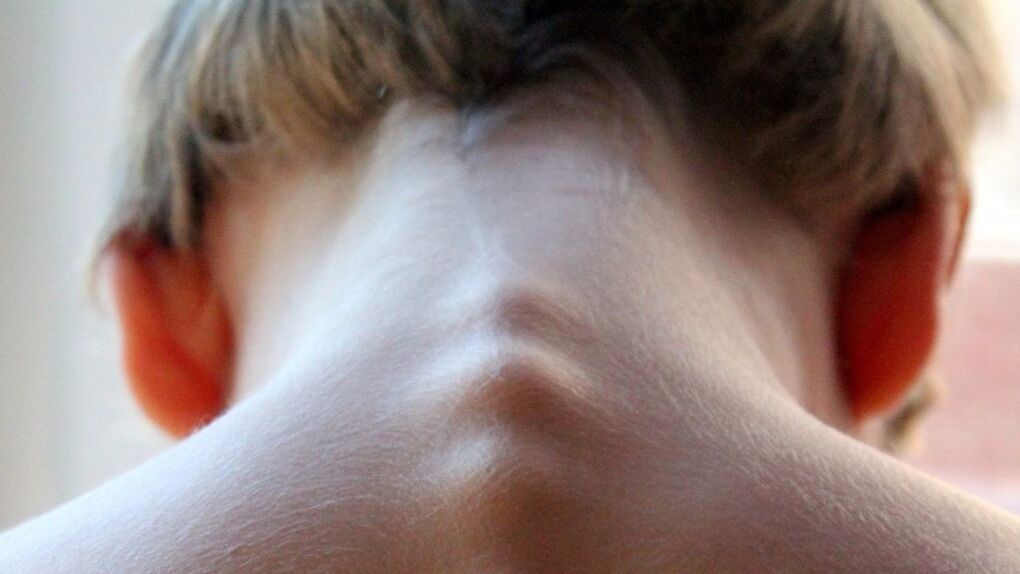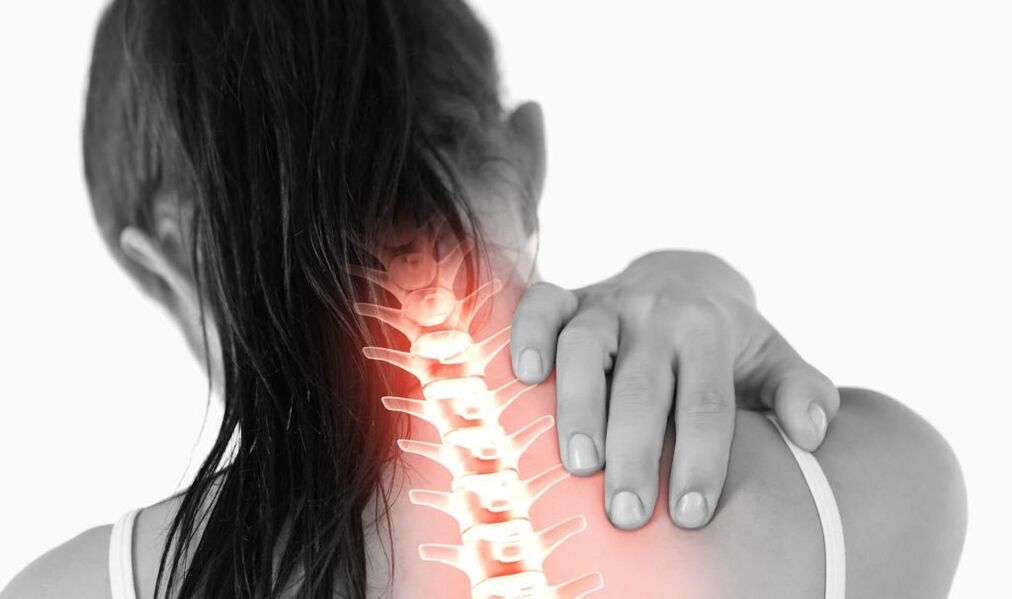Cervical osteochondrosis is a disease characterized by degenerative-dycordophical changes in the tissue of intervertebral discs, leading to a reduction in their height, damage to the joints between the vertebrae, and the roots of the blood vessels and nerves.
Previously, pathology was considered a disease for people over 40, but nowadays osteochondrosis is noticeably younger and is often diagnosed for schoolchildren and students. The disease leads to many complications. Above all, the blood supply to the brain deteriorates. Treatment of cervical osteochondrosis is a long -term process and includes both the drug and non -combined therapy.
Causes of the development of the disease
The causes of osteochondrosis of the cervix are varied. Above all, the disease is poor lifestyle hypodynamia, sedentary work, overweight. At the same time, the main cause of osteochondrosis of the cervical region is blood circulation violations in this zone. As a result, the diet of tissues in the intervertebral plates deteriorates, which results in a change in their structure. Many factors contribute to the onset of this disease:
- Hypodynamia;
- weak muscle back corset;
- Overweight;
- cervical injuries;
- voltage;
- hypothermia;
- Systemic diseases of the connective tissue (red lupus, rheumatoid arthritis).

Hypodynamia is one of the most important factors in the development of spinal diseases. Due to the lack of physical activity, people who spend a lot of time in a sedentary position are faced with osteochondrosis. It also depends a lot on posture and muscles. Inadequate neck positions during long -term work at the table lead to violation of dishes of intervertebral discs, which over time gets into the degeneration of the cartilage and the formation of osteochondrosis. Therefore, the disease is often diagnosed with students and students, as their daily activities are related to many hours at the table or at the table. In addition, osteochondrosis is often diagnosed with office workers and any person who spends a lot of time on a computer.
As a general rule, osteochondrosis is developed at the same time as a result of several provocative factors. Many doctors consider osteochondrosis not as an independent disease, but with the natural consequences of a poor lifestyle. Constant fatigue, stress, improper posture while sleeping or working on a computer, overweight and bad habits - all of which damage the health of the spinal column. As you know, the strong is the key to good health and long life. Despite the fact that osteochondrosis does not endanger life, this infringement can significantly worsen the general well and cause other diseases, so it is important to detect the disease through timely and complex treatment.
Symptoms of the degree of disease and osteochondrosis

Pain syndrome occurs in the background of the progression of the disease. Increasing the symptoms of osteochondrosis of the cervix in women and men are a long process. From the moment when changes in intervertebral discs, they can last for more than a year before the first signs of cervical osteochondrosis. There is no difference in cervical osteochondrosis symptoms in men, women and children. The only difference is that in a juvenile, symptoms do not end as clearly as in elderly. Lubricated symptoms can cause difficulties in treating the cervix osteochondrosis. People do not meet a doctor until you pronounce the symptoms of the disease, which causes discomfort. This occurs at least 5 years after the degeneration of the cartilage tissue of the intervertebral discs. In the early years of development, osteochondrosis of the cervical spine is practically not accompanied by clinical manifestations. Perhaps only a slight feeling of the upper back after sleep or short -term muscle spasms in the moments of psycho -emotional surge. In order to understand the cervical osteochondrosis signs in men and women, the extent of this disease, which characterizes the severity of the pathological process in intervertebral discs.
The first (preclinical) degree of disease: symptoms and characteristics
In the case of cervical osteochondrosis, symptoms and treatment depend on the stage of the pathological process. The first degree is called preclinic because it has no typical clinical symptoms. At this stage, only hardware diagnostics can be recognized with osteochondrosis -the changes in the discs are visible to an X -try (not always) and are well seen on MRI and CT. In the first phase of the disease, the trophism of intervertebral discs is violated. As the disease progresses, a elastic cartilage tissue is compacted. The discs become more difficult, which results in the vertebrae lose mobility. This thus begins with degenerative-dyclic processes, leading to a violation of the function of the cervix. As a general rule, the symptoms become noticeable in the second phase of the disease, but is so poorly expressed that they rarely disturb people. The first degree of the disease comes with the following in a few years.
Symptoms of second degree osteochondrosis

The second stage of cervical osteochondrosis is characterized by the growth of muscle tone in the area of damage. How to cure the cervix osteochondrosis - it depends on the severity of the disease. If the preclinical stage is often continued unnoticed by the patient, the second degree of the disease will obtain symptoms that warn the patient and seek medical attention. It is possible to completely cure the cervix osteochondrosis -it depends on the severity of the pathological process. The sooner the therapy starts, the more favorable the prognosis. In the second phase of the disease, the discs between the vertebrae are compacted. The neck loses mobility, but in the usual life it virtually does not interfere with the patient. A typical symptom is the increase in muscle tone of the affected area. With prolonged physical exertion, sharp movement of the head, long sleep, numbness and muscle hypertonnia. Sudden movements lead to acute pain. This is due to the fact that the cramped muscles squeeze the nerve, causing severe pain. Pain can be added to the tile, on the neck, less frequently in the lower limbs. Such variability of the pain syndrome is due to the large number of nerve roots in the cervix.
The first symptom of osteochondrosis of the cervix:
- fatigue;
- headache;
- dizziness after sleep;
- pain in the cervical region with sudden movements;
- Local numbness in the cervical region's skin.
As a general rule, symptoms occur only from time to time in the second stage of the disease. The reason for this is usually severe overtime or intense physical effort. Most patients do not pay enough attention to ease of malaise, the expectation of discomfort itself. In general, this is the case, the symptoms rarely disturb a person of more than a few hours and without taking special drugs.
Characteristics of third degree osteochondrosis

The symptoms of osteochondrosis of the third degree cervical spine are pronounced. If only changes begin in the first phase of the disease, the second degree is characterized by compression of discs from the discs, then the third stage of osteochondrosis is the cracks and microwaves of the fibrous ring of the plate. Perhaps the formation of a hernia - a loss of a pulpone seed in the intervertebral space. This is accompanied by violation of cerebral circulation as the flat discs heavily compressed the spine artery. A typical symptom is severe headache, frequent dizziness, blinking in the eyes. Third -degree osteochondrosis is constantly present in the cervical difficulty. The muscles are almost always cramping, and people feel difficult and pain. Long -term stay in a situation, tension in the cervical muscles or sleep on an uncomfortable pillow leads to local numbness of the skin or severe pain. You may feel that palpation changes - the cervical muscles become solid for palpation, the pressure causes severe pain. A sign of osteochondrosis of the cervix in men is severe pain than load (women are less frequently filled with this spine in everyday life).
Characteristics of the fourth grade
The suppressed nerve disrupts blood circulation and causes severe pain in the neck. The fourth stage of the disease is the most difficult. At the same time, irreversible changes occur in the structure of the discs. The abnormal process spreads from the fibrous ring to the vertebrae. Signs of osteochondrosis of the cervix in this case are described by several syndrome - these are rooster, reflex, spine syndrome. Severe pain can be observed along the suppressed nerve, and brain circulation disorders. At this stage, the cervical osteochondrosis symptoms are varied. Frequent myalgia (muscles), neuralgia, migraine occur. The pain extends to the chest, and the patient may face discomfort in the heart, which is associated with intercostal neuralgia against the background of the left osteochondrosis.
How to cure osteochondrosis?
Such a spine requires a doctor's intervention
How to treat cervical osteochondrosis best - only one doctor can answer this question. There is no universal treatment in the cervical osteochondrosis, depending on the characteristics of the disease in a particular patient. Patients are often interested in which doctors treat the cervix osteochondrosis. Usually the initial diagnosis is made by the therapist or the neurologist, who patients complained about the pain of the cervix region. To make the diagnosis, check X radiation in three forecasts and MRIs and check the presence of NERI symptoms. The method of treating cervical osteochondrosis depends on the test results, the therapy is selected by the neurologist. Exactly how cervical osteochondrosis is treated in the formation of degenerative-dynist changes in discs. At the initial stage of the disease, special physical education helps to get rid of the symptoms of osteochondrosis in the cervical region and prevents further spread of the pathological process.
The treatment methods for osteochondrosis are different. Complex therapy includes:
- drug treatment;
- Exercise therapy;
- physiotherapy procedures;
- Hand therapy.
Symptoms and treatment of osteochondrosis depends on the severity of pathological changes in the cervix. Treatment of osteocondrosis of the neck should be prescribed as a doctor, the medicine alone does not produce results and can be dangerous.
Drugs
The first thing with cervical osteochondrosis is pain and muscle spasm; This is the first aid for the patient. For this purpose, non -steroid anti -inflammatory drugs, analgesics and muscle relaxants are used. As a general rule, this allows the discomfort to relieve the discomfort within a few hours. Muscle spasm relief in itself is an effective method of treatment as it restores nerve conductivity and blood circulation in the cervix. Treatment of cervical osteochondrosis in the future will depend on the degree of pathological changes. Doctors often prescribe:
- Vitamins B to restore nerve management;
- Chondroprotectors to improve the nutrition of cartilage tissue in intervertebral discs;
- Nootropics to improve cerebral circulation;
- products that improve blood rheological properties;
- Separators to relieve stress.
Not all groups listed should be used at different stages of the disease. The exact methods of osteochondrosis of the cervix are selected by the doctor.
Practice therapy
Media physical education cope with osteochondrosis in the early stages of development. Medical physical education is the most effective treatment for cervical osteochondrosis in the early stages. Children and adults osteochondrosis occurs due to the back muscles, so this treatment is not only aimed at eliminating the symptoms, but also to eliminate the cause of the disease. The therapeutic exercises are held in the special office of the clinic. The exercises are selected separately for each person and are under the supervision of a doctor. Treatment of the cervix osteochondrosis - depends on how quickly one has come to the doctor. The first degree of the disease can be cured by gymnastics alone. Symptoms of osteochondrosis of the cervical vertebrae occur after several such classes as the muscle cramps are reduced.
Physiotherapy

Chronic osteochondrosis, whose symptoms can virtually do not interfere, are treated with physiotherapy. The purpose of this method is to restore normal nutrition in intervertebral discs. Electrophoresis with nicotinic acid is usually used to expand blood vessels and improve blood circulation. This treatment method relieves cervical osteochondrosis symptoms with radicular syndrome and migraine by reducing nerve compression and improving cerebral circulation. The main symptoms of osteochondrosis of the cervix can be eliminated by magnetic or heat exposure. Only 10-15 procedures normalize the trophy in the cervix and eliminate the symptoms of the disease.
Forecast
Cervical healing of osteochondrosis - it depends on the severity of the disease. In the initial stages, the pathological process is completely reversed. Intervertebral discs are restored with the right approach but slowly. The purpose of the treatment is to prevent the disease and to restore the elasticity of the cartilage. With advanced forms of the disease, it is almost impossible to return to the previous mobility of the neck. In this case, comprehensive treatment of osteochondrosis of the cervical spine allows you to get rid of symptoms and prevent complications. In severe cases, the patient should prevent preventive treatment twice a year.



















